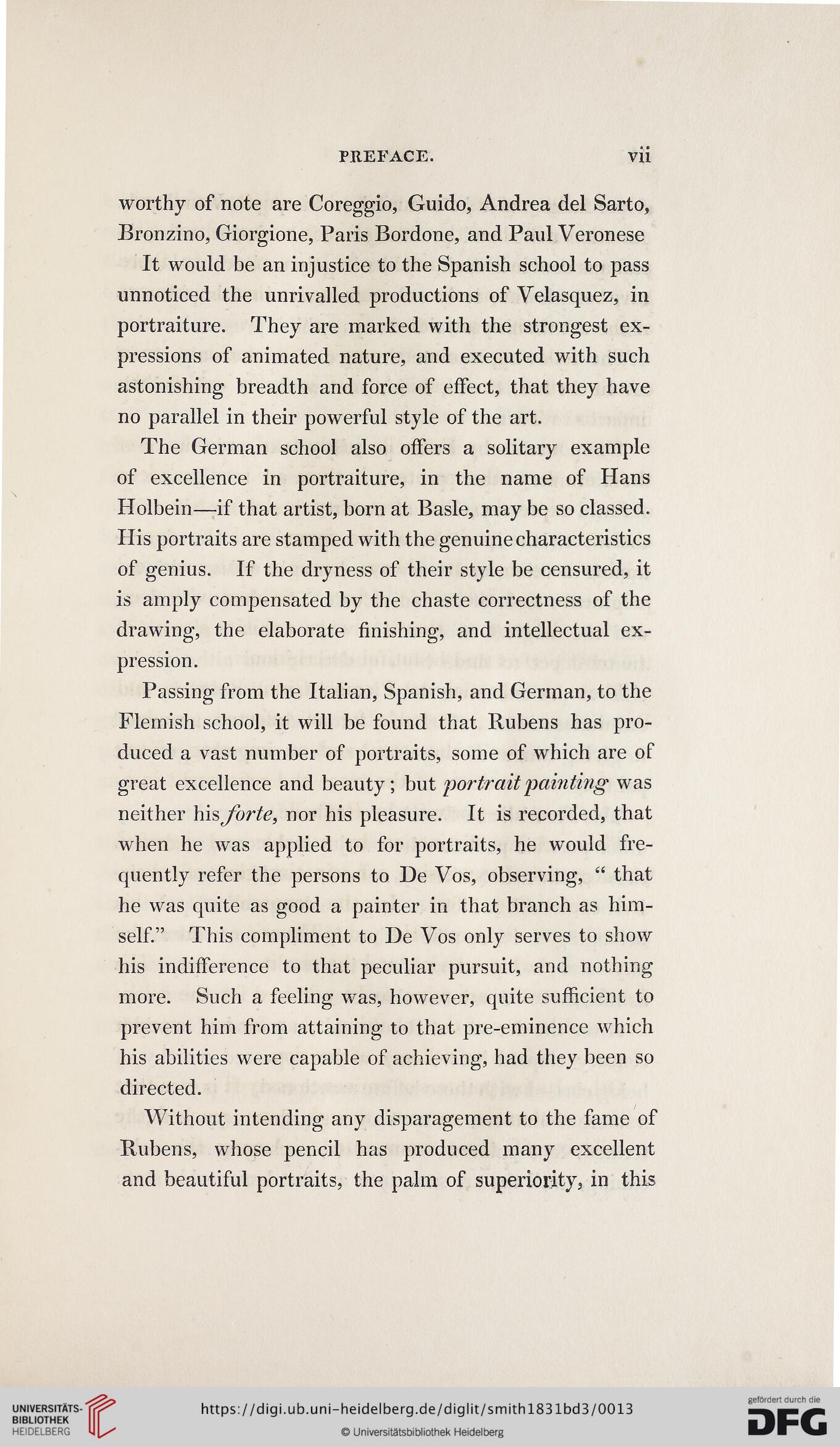PREFACE.
vii
worthy of note are Coreggio, Guido, Andrea del Sarto,
Bronzino, Giorgione, Paris Bordone, and Paul Veronese
It would be an injustice to the Spanish school to pass
unnoticed the unrivalled productions of Velasquez, in
portraiture. They are marked with the strongest ex-
pressions of animated nature, and executed with such
astonishing breadth and force of effect, that they have
no parallel in their powerful style of the art.
The German school also offers a solitary example
of excellence in portraiture, in the name of Hans
Holbein—if that artist, born at Basle, may be so classed.
His portraits are stamped with the genuine characteristics
of genius. If the dryness of their style be censured, it
is amply compensated by the chaste correctness of the
drawing, the elaborate finishing, and intellectual ex-
pression.
Passing from the Italian, Spanish, and German, to the
Flemish school, it will be found that Rubens has pro-
duced a vast number of portraits, some of which are of
great excellence and beauty; but portrait painting was
neither his forte, nor his pleasure. It is recorded, that
when he was applied to for portraits, he would fre-
quently refer the persons to De Vos, observing, “ that
he was quite as good a painter in that branch as him-
self.” This compliment to De Vos only serves to show
his indifference to that peculiar pursuit, and nothing
more. Such a feeling was, however, quite sufficient to
prevent him from attaining to that pre-eminence which
his abilities were capable of achieving, had they been so
directed.
Without intending any disparagement to the fame of
Rubens, whose pencil has produced many excellent
and beautiful portraits, the palm of superiority, in this
vii
worthy of note are Coreggio, Guido, Andrea del Sarto,
Bronzino, Giorgione, Paris Bordone, and Paul Veronese
It would be an injustice to the Spanish school to pass
unnoticed the unrivalled productions of Velasquez, in
portraiture. They are marked with the strongest ex-
pressions of animated nature, and executed with such
astonishing breadth and force of effect, that they have
no parallel in their powerful style of the art.
The German school also offers a solitary example
of excellence in portraiture, in the name of Hans
Holbein—if that artist, born at Basle, may be so classed.
His portraits are stamped with the genuine characteristics
of genius. If the dryness of their style be censured, it
is amply compensated by the chaste correctness of the
drawing, the elaborate finishing, and intellectual ex-
pression.
Passing from the Italian, Spanish, and German, to the
Flemish school, it will be found that Rubens has pro-
duced a vast number of portraits, some of which are of
great excellence and beauty; but portrait painting was
neither his forte, nor his pleasure. It is recorded, that
when he was applied to for portraits, he would fre-
quently refer the persons to De Vos, observing, “ that
he was quite as good a painter in that branch as him-
self.” This compliment to De Vos only serves to show
his indifference to that peculiar pursuit, and nothing
more. Such a feeling was, however, quite sufficient to
prevent him from attaining to that pre-eminence which
his abilities were capable of achieving, had they been so
directed.
Without intending any disparagement to the fame of
Rubens, whose pencil has produced many excellent
and beautiful portraits, the palm of superiority, in this




